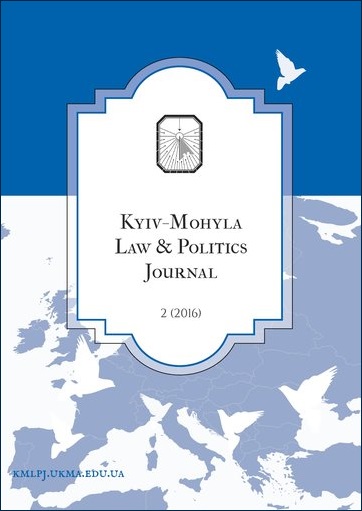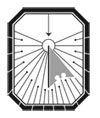The Orange and Euromaidan Revolutions: Theoretical and Comparative Perspectives
DOI:
https://doi.org/10.18523/kmlpj88183.2016-2.91-115Keywords:
Rose Revolution, Orange Revolution, Euromaidan Revolution of Dignity, Viktor Yanukovych, Vladimir Putin, Vigilantes, Nationalism, European IntegrationAbstract
Ukraine has experienced two popular uprisings in a decade (2004, 2013–2014), which took place in four different circumstances. Firstly, the Orange Revolution began as a protest against election fraud during an election cycle while the Euromaidan began in protest at the abrupt end to European integration and was outside an election cycle. Secondly, whether the incumbent was leaving office (Leonid Kuchma, 2004) or seeking to be re-elected and remain in power indefinitely (Viktor Yanukovych, 2013–2014) had a direct bearing on regime strategies against the protestors. Thirdly, Russian intervention was limited to finances, the supply of political technologists and diplomatic support in the former whereas during the latter, Russia used its intelligence, special forces and military to intervene in the protests, annex territory and invade Ukraine. Fourthly, the type of leader which was in power (former Soviet nomenklatura versus thuggish and criminalized Donetsk clan) had a direct impact on whether the authorities would seek compromise and non-violence (Kuchma, 2004) or reject compromise and resort to violence through vigilantes, Berkut riot police and the Security Service (Yanukovch, 2013–2014).References
- Beissinger, Mark A. “The Semblance of Democratic Revolution: Coalitions in Ukraine’s Orange Revolution.” American Political Science Review 107.3 (2013): 574–92.
- Brubaker, Rogers. “National Minorities, Nationalizing States, and External Homelands in the New Europe.” Daedalus 124.2 (1995): 107–32.
- Buerkle, Karen et al. Public Opinion in Ukraine After the Orange Revolution. Washington DC: International Foundation for Electoral Systems, 2005. (http://www.ifes.org/Content/Publications/Survey/2005/Public-Opinion-in-Ukraine-After-the-Orange-Revolution-2005.aspx.)
- D’Anieri, Paul. “Ethnic Tensions and State Strategies: Understanding the Survival of the Ukrainian State.” Journal of Communist Studies and Transition Politics 23.1 (2007): 4–29.
- Fairbanks, Charles H. “Georgia’s Rose Revolution.” Journal of Democracy 15.2 (2004): 110–24.
- Karatnycky, Adrian, and Peter Acherman. How Freedom is Won. From Civic Resistance to Durable Democracy. New York: Freedom House, 2005.
- Krnjevic-Miskovic, Damjan de. “Serbia’s Prudent Revolution.” Journal of Democracy 12.3 (2001): 96–110.
- Kudelia, Serhiy, and Taras Kuzio. “Nothing Personal: Explaining the Rise and Decline of Political Machines in Ukraine.” Post-Soviet Affairs 30.6 (2014): 1–29.
- Kuzio, Taras. “Competing Nationalisms, Euromaidan and the Russian-Ukrainian Conflict.” Studies in Ethnicity and Nationalism 15.1 (2015): 158–69.
- Kuzio, Taras et al., eds. State and Institution Building in Ukraine. New York: St. Martin’s Press, 1999.
- Kuzio, Taras, Guest Editor. “Democratic Revolutions in Post-Communist States.” Communist and Post-Communist Studies 39.3 (2006).
- Kuzio, Taras. “‘Nationalising States’ or Nation Building: A Review of the Theoretical Literature and Empirical Evidence.” Nations and Nationalism 7.2 (2001): 135–54.
- Kuzio, Taras. “Nationalism, Identity and Civil Society in Ukraine: Understanding the Orange Revolution.” Communist and Post-Communist Studies 43.3 (2010): 285–96.
- Kuzio, Taras. The Crimea: Europe’s Next Flashpoint? Washington DC: The Jamestown Foundation, November, 2010.
- Kuzio, Taras. “The Rise and Fall of the Party of Regions Political Machine.” Problems of Post-Communism 62.3 (2015): 174–86.
- Laitin, David. Identity in Formation. The Russian-Speaking Population in the Near Abroad. Ithaca, NY: Cornell University Press, 1998.
- Leshchenko, Serhii. Mezhyhirskyi syndrom. Diahnoz Vladi Viktora Yanukovycha [The Mezhyhiria Syndrome: A Diagnosis of Viktor Yanukovych’s Rule]. Kyiv: Bright Star Publishing, 2014.
- Levitsky, Steven, and Lucan Way. “The Rise of Competitive Authoritarianism.” Journal of Democracy 13.2 (2002): 51–65.
- Lozhkin, Borys. The Fourth Republic. Why Europe Needs Ukraine and Ukraine Needs Europe. Kyiv: Novyi druk, 2016.
- Silitski, Vitalii. “Preempting Democracy: The Case of Belarus.” Journal of Democracy 16.4 (2005): 83–97.
- Way, L.A. “The Sources and Dynamics of Competitive Authoritarianism in Ukraine.” Journal of Communist Studies and Transition Politics 20.1 (2004): 143–61.
- Weller, Craig A. “Mass Attitudes and Ethnic Conflict in Ukraine.” In Dilemmas of State-Led Nation Building in Ukraine, edited by Taras Kuzio and Paul D’Anieri, 71–102. Westport, Conn.: Praeger, 2002.
Downloads
Published
How to Cite
Issue
Section
License
Copyright (c) 2016 Taras Kuzio

This work is licensed under a Creative Commons Attribution 4.0 International License.
Kyiv-Mohyla Law and Politics Journal provides free access to original research without restriction barriers (i.e. subscription fees, licensing fees etc.).
Unless otherwise indicated, content is licensed under the Creative Commons Attribution 4.0 International (CC BY 4.0) license, which means you are free to:
distribute, remix, tweak, and build upon your work, even commercially
...provided that any use is made with attribution to author(s) and Kyiv-Mohyla Law and Politics Journal.
The copyright in the article or any other submission to Kyiv-Mohyla Law and Politics Journal shall remain with the author(s).
The journal allows the author(s) to hold the copyright without restrictions and will retain publishing rights without restrictions.








